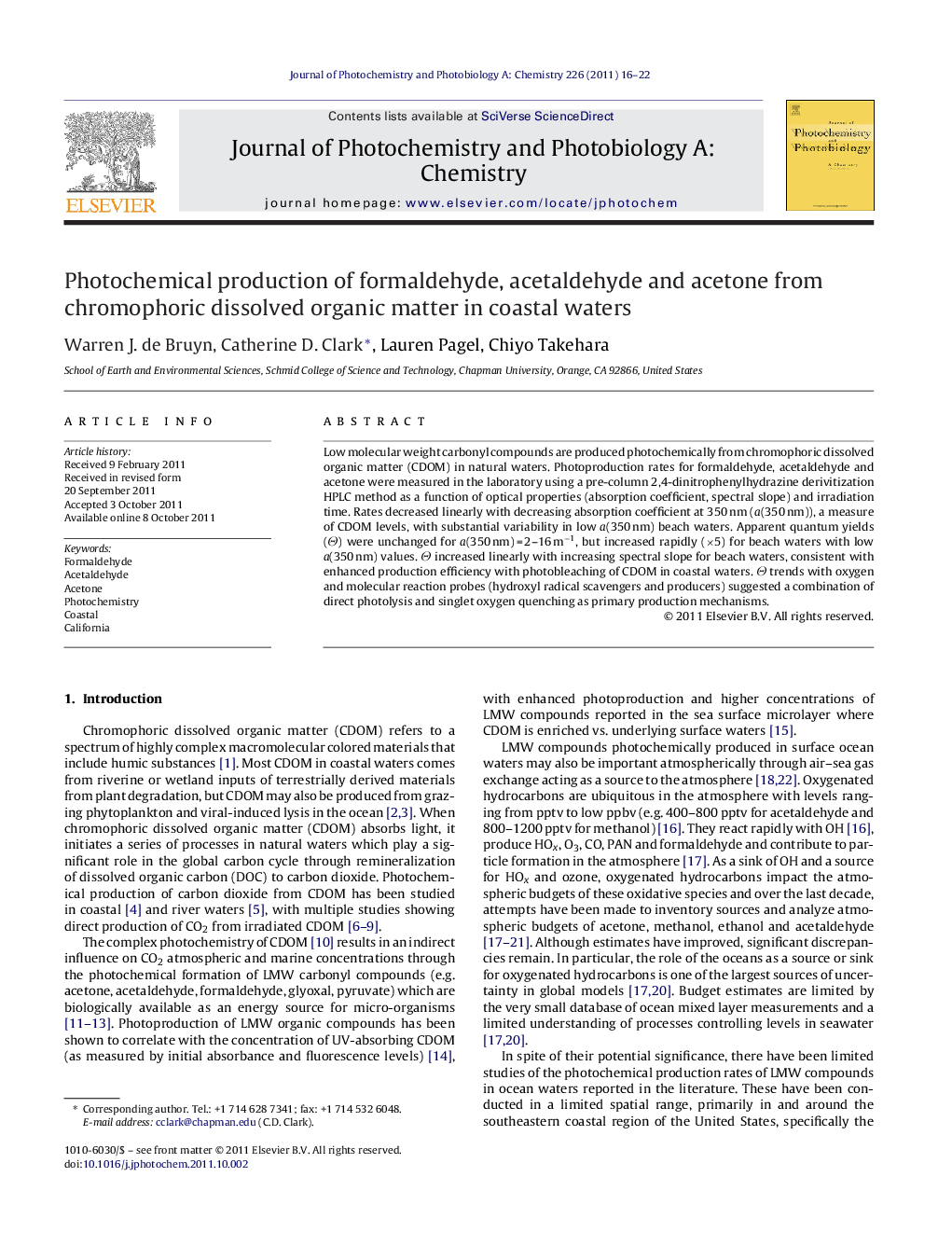| Article ID | Journal | Published Year | Pages | File Type |
|---|---|---|---|---|
| 26573 | Journal of Photochemistry and Photobiology A: Chemistry | 2011 | 7 Pages |
Low molecular weight carbonyl compounds are produced photochemically from chromophoric dissolved organic matter (CDOM) in natural waters. Photoproduction rates for formaldehyde, acetaldehyde and acetone were measured in the laboratory using a pre-column 2,4-dinitrophenylhydrazine derivitization HPLC method as a function of optical properties (absorption coefficient, spectral slope) and irradiation time. Rates decreased linearly with decreasing absorption coefficient at 350 nm (a(350 nm)), a measure of CDOM levels, with substantial variability in low a(350 nm) beach waters. Apparent quantum yields (Θ) were unchanged for a(350 nm) = 2–16 m−1, but increased rapidly (×5) for beach waters with low a(350 nm) values. Θ increased linearly with increasing spectral slope for beach waters, consistent with enhanced production efficiency with photobleaching of CDOM in coastal waters. Θ trends with oxygen and molecular reaction probes (hydroxyl radical scavengers and producers) suggested a combination of direct photolysis and singlet oxygen quenching as primary production mechanisms.
► Low molecular weight carbonyl compounds are produced photochemically from CDOM. ► Photoproduction rates decrease linearly with absorbance in estuarine source waters. ► Photoproduction rates vary significantly in coastal waters with low absorbance values ► Apparent quantum yields increase for coastal waters with higher spectral slopes. ► Direct photolysis and singlet oxygen quenching are primary production mechanisms.
